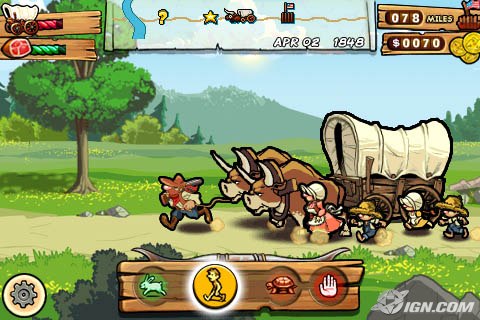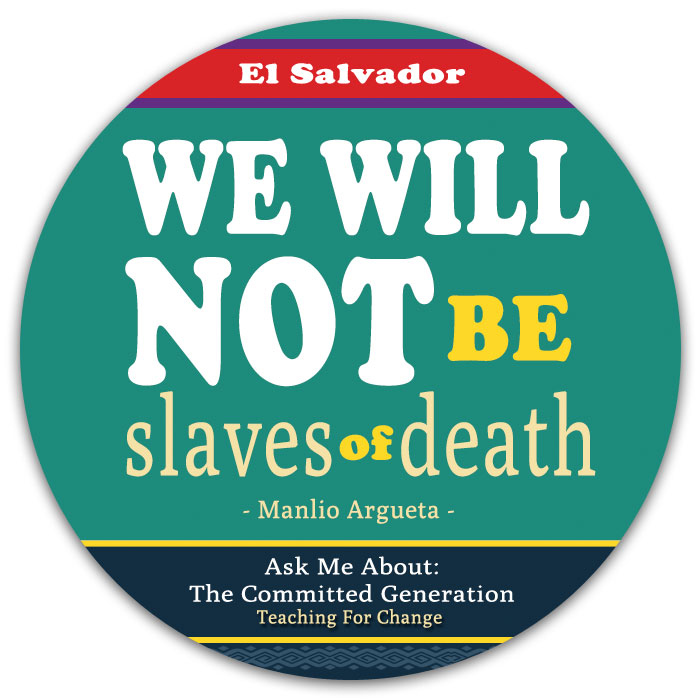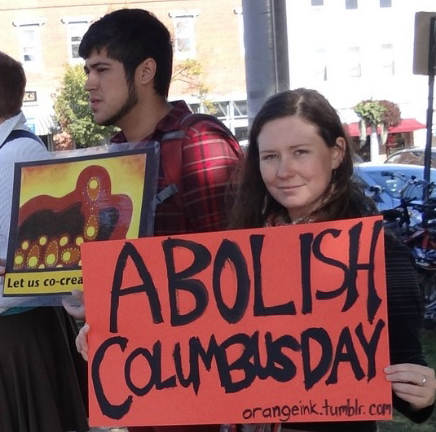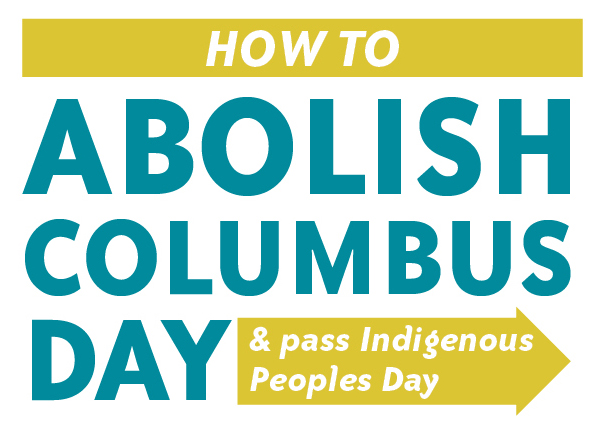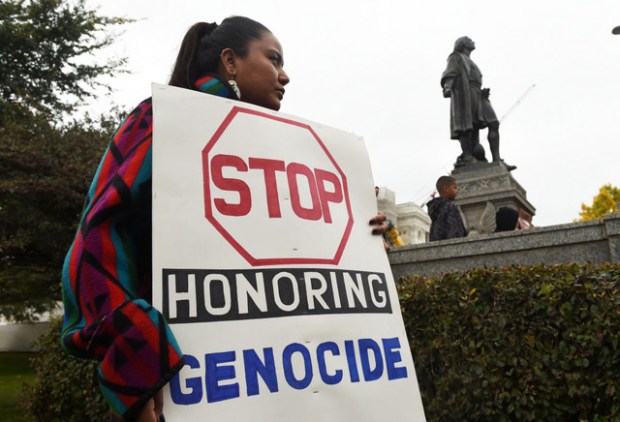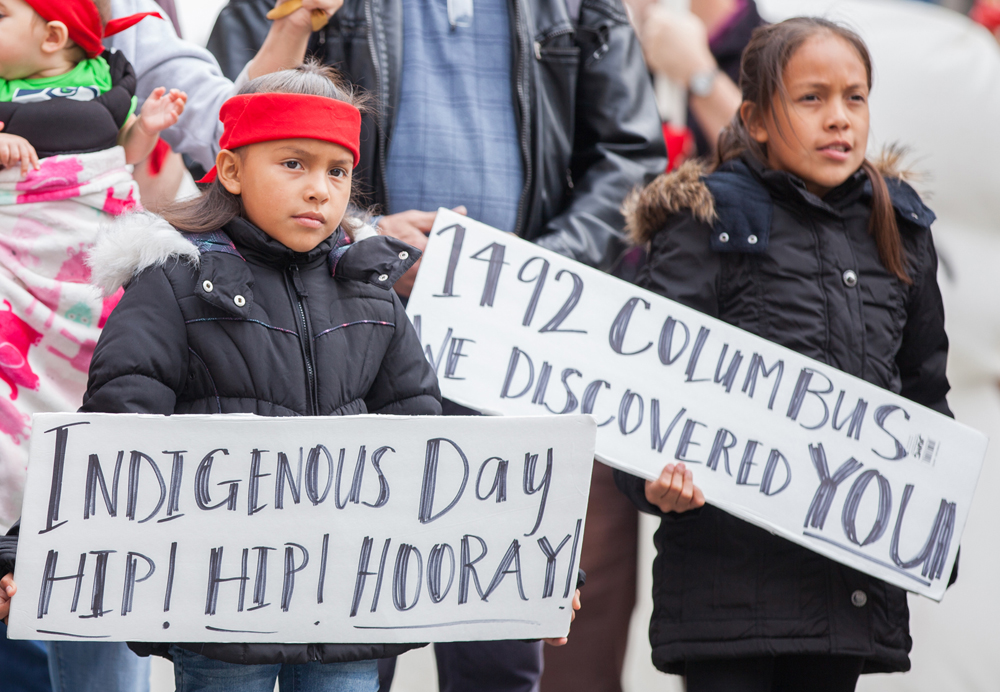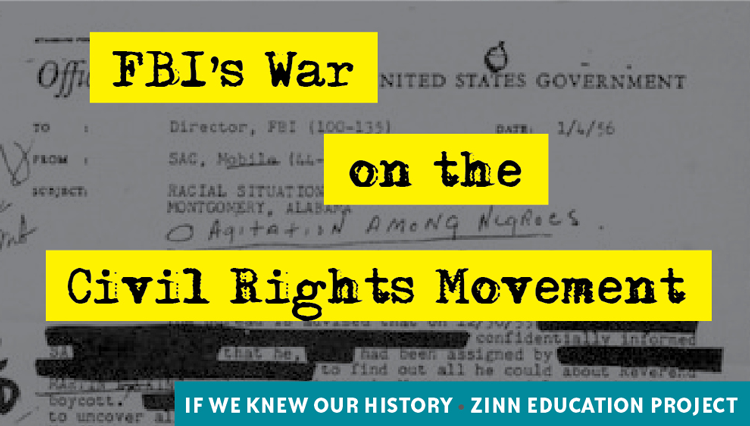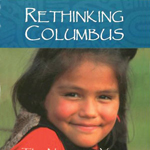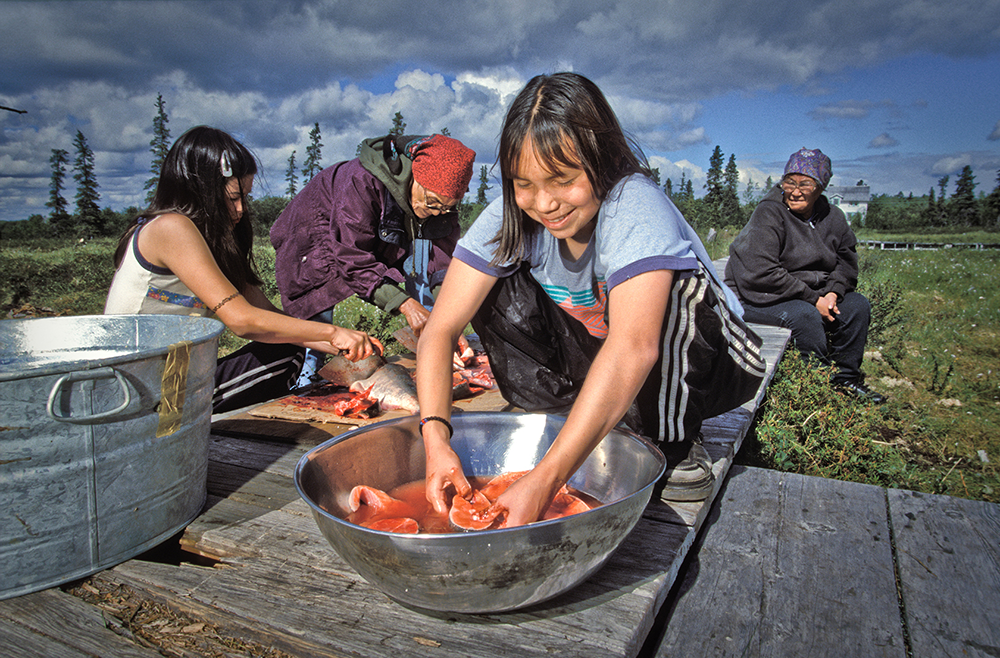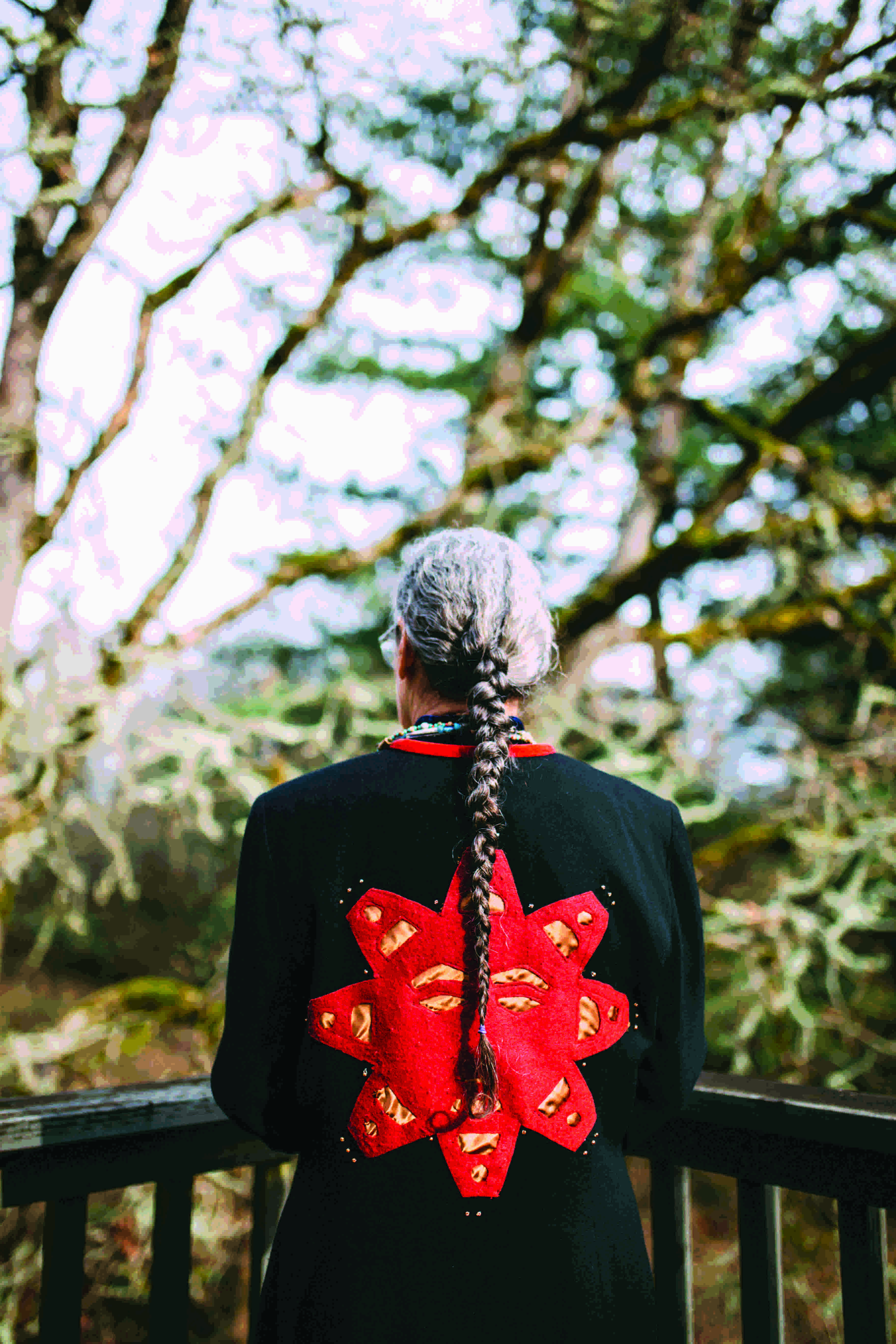On the Road to Cultural Bias: A Critique of The Oregon Trail
Article. By Bill Bigelow. Rethinking Schools.
Critique of the popular "Oregon Trail" computer game.
Continue reading
Critique of the popular "Oregon Trail" computer game.
The Export of Colors
Article. By Manlio Argueta. From Cuzcatlán, Donde bate la mar del sur.
An excerpt from a novel of historical fiction about the impact of an export economy on peasants in El Salvador.
Continue reading
An excerpt from a novel of historical fiction about the impact of an export economy on peasants in El Salvador.
Time to Abolish Columbus Day
Article. By Bill Bigelow. 2015. If We Knew Our History Series.
When the school curriculum celebrates Columbus, children are taught that it’s OK for white people to rule over peoples of color and that militarily powerful nations can bully weaker nations. By his own account, Columbus enslaved people, destroyed cultures, and terrorized those who challenged his rule. It’s time to abolish Columbus Day.
Continue reading
How to Abolish Columbus Day and Get an Indigenous Peoples’ Day Resolution Passed
Article. By Mahtowin Munro.
Campaign guidelines from the organizer of a successful effort to abolish Columbus Day and establish Indigenous Peoples' Day in Cambridge, Mass.
Continue reading
Campaign guidelines from the organizer of a successful effort to abolish Columbus Day and establish Indigenous Peoples' Day in Cambridge, Mass.
Christopher Columbus: No Monuments for Murderers
By Bill Bigelow
Continue reading
A New York Times article said the symbolism of Christopher Columbus is "murky.” But there is nothing murky about Columbus’ legacy of slavery and terrorism in the Americas. The record is clear and overwhelming. The fact that the New York Times could report this with such confidence — adding that “most Americans learn rather innocently, in 1492 [Columbus] sailed the ocean blue until he discovered the New World” — means that educators and activists still have much work to do.
Support Indigenous Rights: Abolish Columbus Day
By Bill Bigelow
Continue reading
The movement to abolish Columbus Day and to establish in its place Indigenous Peoples' Day continues to gather strength, as every month new school districts and colleges take action. This campaign has been given new momentum as Indigenous peoples throughout the Americas assert their treaty and human rights. Especially notable is the inspiring struggle in North Dakota to stop the toxic Dakota Access Pipeline, led by the Standing Rock Sioux.
Dave Archambault, chairperson of the Standing Rock Sioux Tribe, explains that the oil pipeline “is threatening the lives of people, lives of my tribe, as well as millions down the river. It threatens the ancestral sites that are significant to our tribe. And we never had an opportunity to express our concerns. This is a corporation that is coming forward and just bulldozing through without any concern for tribes.”
The “bulldozing” of Indigenous lives, Indigenous lands, and Indigenous rights all began with Columbus’s invasion in 1492.
Dave Archambault, chairperson of the Standing Rock Sioux Tribe, explains that the oil pipeline “is threatening the lives of people, lives of my tribe, as well as millions down the river. It threatens the ancestral sites that are significant to our tribe. And we never had an opportunity to express our concerns. This is a corporation that is coming forward and just bulldozing through without any concern for tribes.”
The “bulldozing” of Indigenous lives, Indigenous lands, and Indigenous rights all began with Columbus’s invasion in 1492.
Why We Should Teach About the FBI’s War on the Civil Rights Movement
By Ursula Wolfe-Rocca
Continue reading
On March 8, 1971 — while Muhammad Ali was fighting Joe Frazier at Madison Square Garden, and as millions sat glued to their TVs watching the bout unfold — a group of peace activists broke into an FBI office in Media, Pennsylvania, and stole every document they could find.
Delivered to the press, these documents revealed an FBI conspiracy — known as COINTELPRO — to disrupt and destroy a wide range of protest groups, including the Black freedom movement. The break-in, and the government treachery it revealed, is a chapter of our not-so-distant past that all high school students — and all the rest of us — should learn, yet one that history textbooks continue to ignore.
Delivered to the press, these documents revealed an FBI conspiracy — known as COINTELPRO — to disrupt and destroy a wide range of protest groups, including the Black freedom movement. The break-in, and the government treachery it revealed, is a chapter of our not-so-distant past that all high school students — and all the rest of us — should learn, yet one that history textbooks continue to ignore.
The New (and Improved?) Textbook Columbus
By Bill Bigelow
Continue reading
Recently, I ran across an old manual that described itself as “An easy step-by-step guide to obtain U.S. Citizenship.” A page of history and government questions begins:
This was the simple, and simplistic, history that I learned in 4th grade in the early 1960s growing up in California — a kind of secular Book of Genesis: In the beginning, there was Columbus; he was good and so are we.
And it stayed the history that most everyone learned until the Columbus quincentenary in 1992 brought together Native Americans, social justice organizations, and educators to demand a more inclusive and critical version of what occurred in 1492 and after.
Q: Who discovered America?
A: Christopher Columbus in 1492.
A: Christopher Columbus in 1492.
This was the simple, and simplistic, history that I learned in 4th grade in the early 1960s growing up in California — a kind of secular Book of Genesis: In the beginning, there was Columbus; he was good and so are we.
And it stayed the history that most everyone learned until the Columbus quincentenary in 1992 brought together Native Americans, social justice organizations, and educators to demand a more inclusive and critical version of what occurred in 1492 and after.
Climate Change and School in a Yup’ik Fishing Village
Article. By Jill Howdyshell.
The author describes how climate change is hitting Indigenous communities in Alaska much harder than other places in the world. And yet, administrators still insist that school discussions should focus on student test scores.
Continue reading
The author describes how climate change is hitting Indigenous communities in Alaska much harder than other places in the world. And yet, administrators still insist that school discussions should focus on student test scores.
Students “Warrior Up” for Climate Justice
Article. By Bill Bigelow. Rethinking Schools, Fall 2018.
Teaching hope instead of despair, teachers invite students to research “climate warriors,” those who “know the truth” and yet are not defeated by it.
Continue reading
Teaching hope instead of despair, teachers invite students to research “climate warriors,” those who “know the truth” and yet are not defeated by it.

